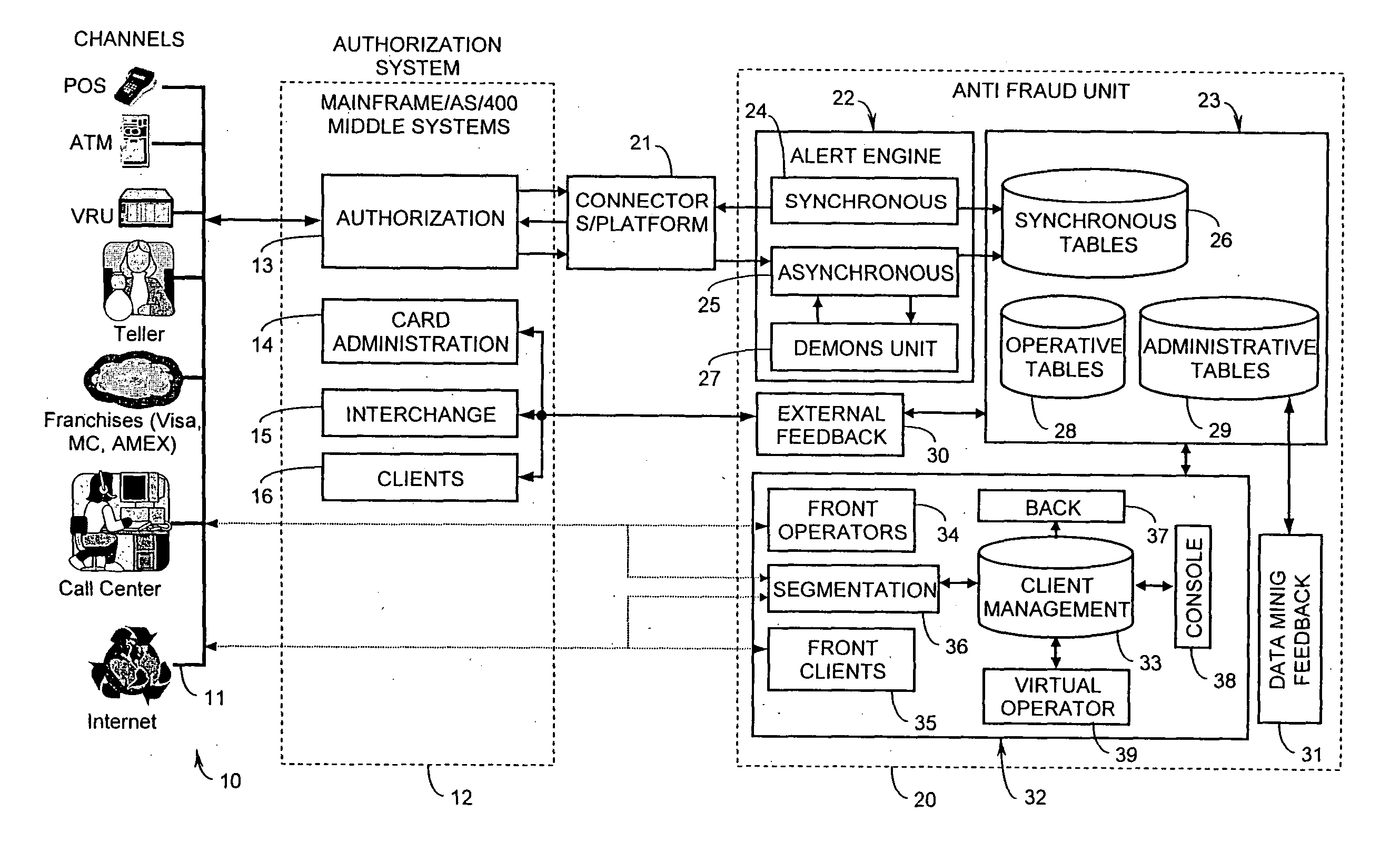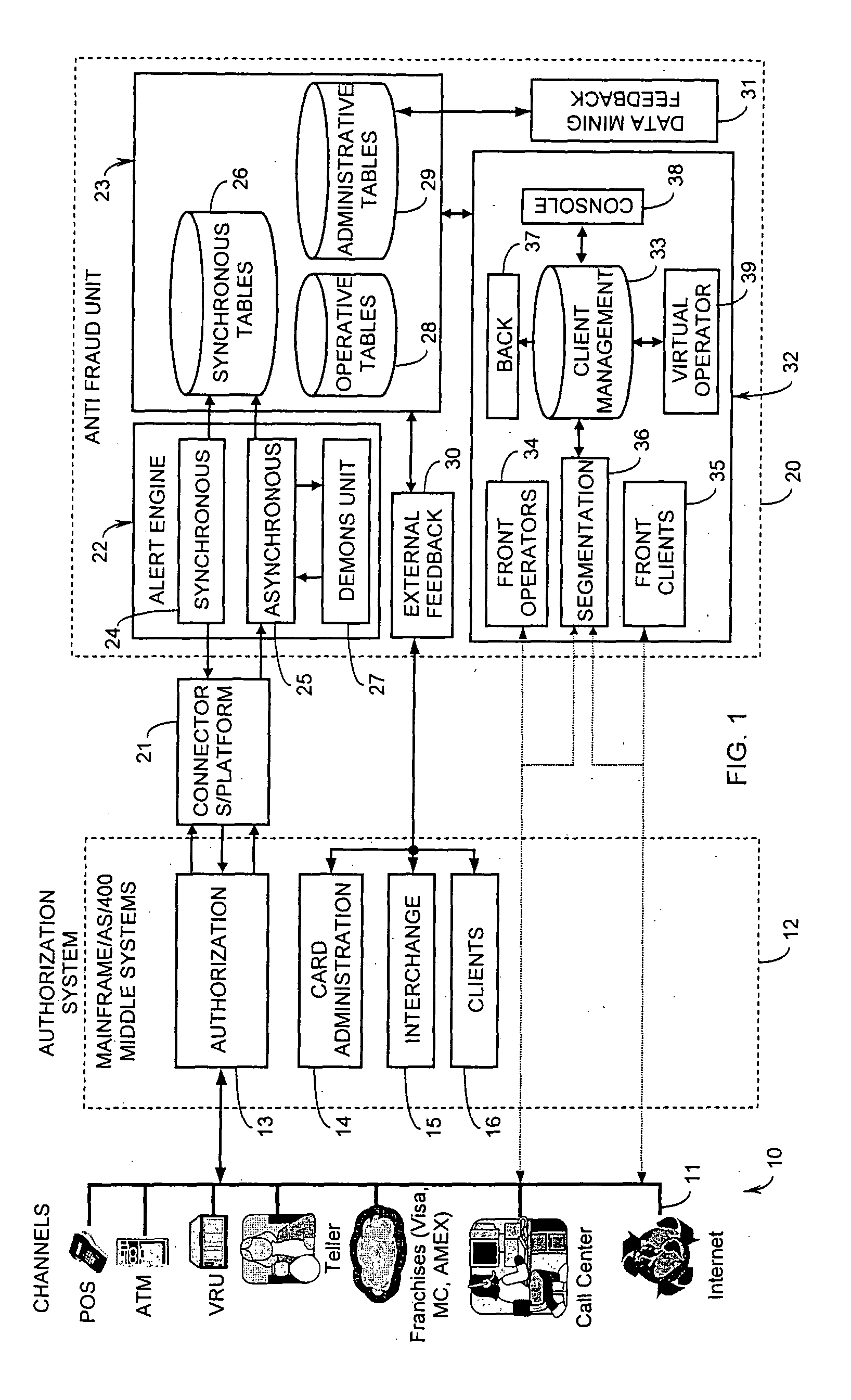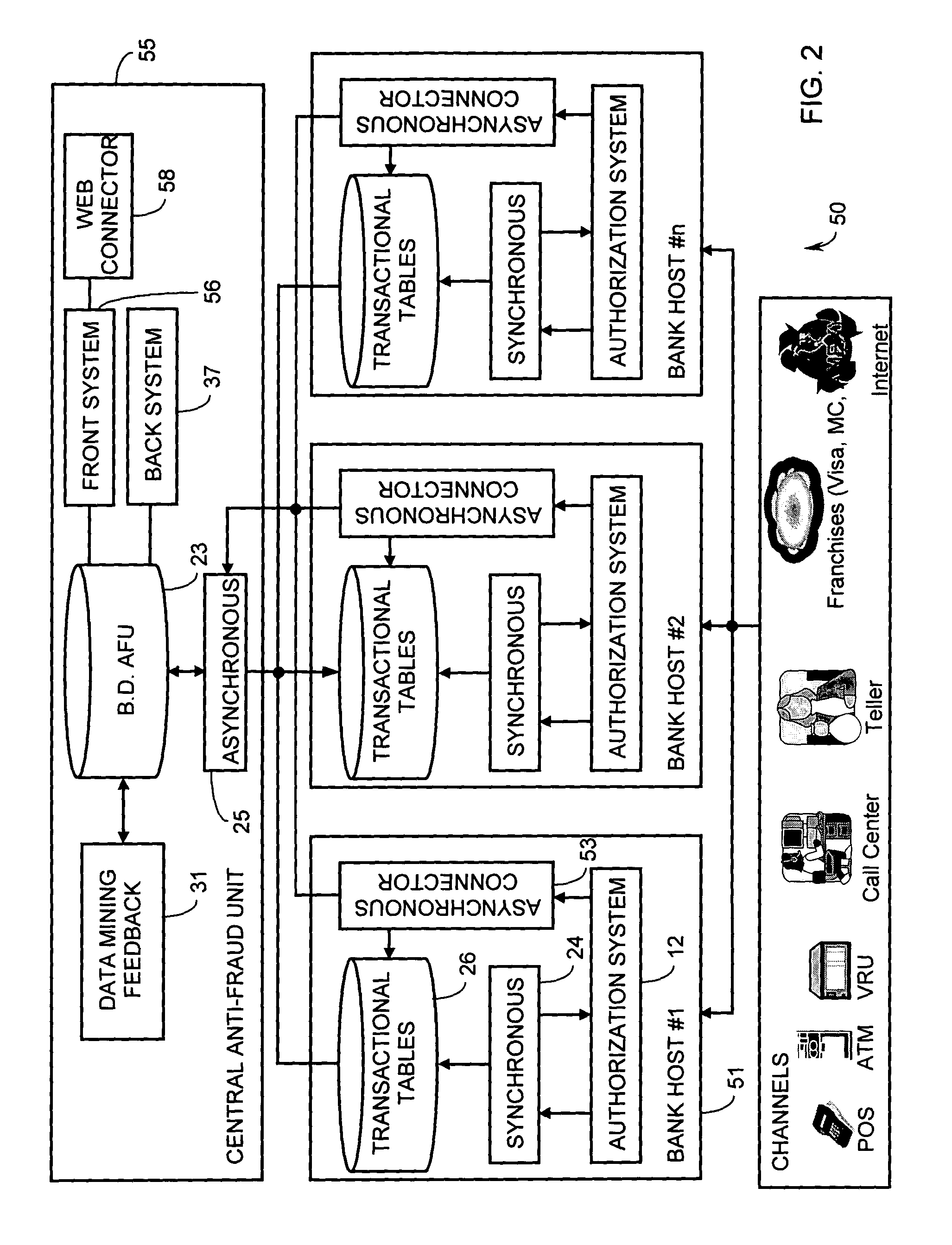Method and system for determining whether a situation meets predetermined criteria upon occurrence of an event
a technology of predetermined criteria and event, applied in the field of event-driven systems, to achieve the effect of quick determination
- Summary
- Abstract
- Description
- Claims
- Application Information
AI Technical Summary
Benefits of technology
Problems solved by technology
Method used
Image
Examples
first embodiment
[0027]FIG. 1 is a block diagram showing a system depicted generally as 10 according to the invention for filtering high-risk transactions. Multiple channels 11 are connected to an authorization system 12 the heart of which is a computer, adapted to serve multiple satellite terminals simultaneously. The authorization system 12 includes an authorization unit 13 to which a transaction, Tx, is conveyed from one or more of the channels. Transactions are typically carried out via ATMs, point-of-sale terminals and bank teller terminals. However, in addition, the channels 11 also allow for transactions to be initiated via the Internet. Typically, transactions arriving at the authorization unit 13 must be processed and a response indicative of either acceptance or denial of service must be returned within several milliseconds.
[0028] The authorization system 12 further includes a card administration unit 14, an interchange unit 15, connected to external financial institutions, such as interna...
second embodiment
[0039] Referring now to FIG. 2, a system 50 is shown according to the invention. To the extent that both systems include overlapping components, identical reference numerals will be used. Thus, the system 50 includes the same multiplicity of channels 11 as shown in FIG. 1 all of which are connected in parallel with a plurality of bank host computers designated #1, #2 . . . #n and each referenced 51 since they are, so far as is relevant to the invention, functionally identical. Each bank host computer 51 includes an authorization system 12 that operates in similar manner to that shown in FIG. 1. Additionally, each bank host computer 51 includes distributed components of the alert engine 22 shown in FIG. 1. Specifically, there are coupled to the authorization system 12 in the bank host computer 51 a synchronous processor 24 connected to a synchronous table 26, which in turn is coupled to an asynchronous connector 53 and operates as described above with reference to FIG. 1 of the drawi...
PUM
 Login to View More
Login to View More Abstract
Description
Claims
Application Information
 Login to View More
Login to View More - R&D
- Intellectual Property
- Life Sciences
- Materials
- Tech Scout
- Unparalleled Data Quality
- Higher Quality Content
- 60% Fewer Hallucinations
Browse by: Latest US Patents, China's latest patents, Technical Efficacy Thesaurus, Application Domain, Technology Topic, Popular Technical Reports.
© 2025 PatSnap. All rights reserved.Legal|Privacy policy|Modern Slavery Act Transparency Statement|Sitemap|About US| Contact US: help@patsnap.com



